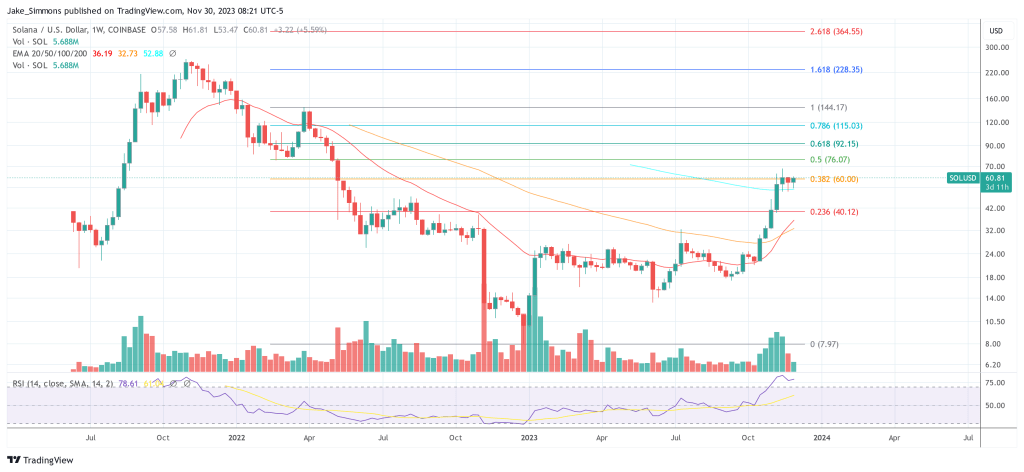Thor Hartvigsen, a DeFi researcher and Business Development professional at Redacted Cartel, shared a detailed analysis into the potential of Solana to achieve mass adoption today. Hartvigsen’s examination focuses on the technical aspects and key developments (apart from price speculation) within the SOL ecosystem that might pave the way for its widespread acceptance.
Parallel Execution, Solang, Eclipse And Neon
A significant feature of Solana is its ability to process multiple transactions concurrently through ‘parallel execution’. This method stands in contrast to the sequential processing found in many other blockchains like Ethereum.
Hartvigsen notes, “This parallelism in processing ensures that activities like large NFT mints, which might spike transaction fees, do not adversely affect the cost of transactions for DeFi users, as these are handled in separate threads.”
Solang, a compiler on Solana, is another crucial element to reach mass adoption. It enables developers to build decentralized applications (dApps) using Solidity, which is commonly used for Ethereum Virtual Machines (EVMs). This compatibility potentially eases the transition for developers from EVMs to the Solana Virtual Machine (SVM).
Eclipse, a layer-2 rollup slated for release on Ethereum later this year, is also poised to become a major building block for mass adoption. It aims to bring Solana’s high throughput to the Ethereum ecosystem by leveraging the SVM for execution.
Hartvigsen explains, “Eclipse integrates Ethereum mainnet for settlement, Celestia for data availability, and Risc Zero for validity proofs, creating a robust cross-chain solution.”
The NeonVM, a virtual machine native to Solana, integrates the EVM with SOL’s framework and could be a major weapon in its competition with Ethereum. This integration allows developers to deploy Ethereum dApps on Solana, benefiting from lower gas fees and faster transaction processing.
Solana’s DeFi Ecosystem
The Solana DeFi ecosystem has shown notable growth in recent months, particularly in areas like lending, DEX volumes, and liquid staking. As Ethereum’s growth story has shown, DeFi could become an important pillar for the adoption of SOL.
Hartvigsen highlights several key protocols. Among them is Jito, Solana’s largest Liquid Staking Derivative (LSD) protocol. It offers a stable yield (~6.88%) on SOL tokens, derived from staking and maximal extractable value (MEV) rewards. The recent announcement about the launch of their governance token JTO is a significant development, according to the researcher.
Moreover, Hartvigsen mentions Jupiter, a DEX aggregator which handles most of the swap volume on Solana ($3.9 billion in the past 30 days). They have also launched a beta version of their perpetual futures product, offering up to 100x leverage on cryptocurrencies like BTC, ETH, and SOL.
Lastly, the researcher highlight Marginfi, known as the largest lending market. Marginfi was one of the first to implement a ‘points system’. This system allows liquidity providers to earn points, which later translate into a token airdrop. The Total Value Locked (TVL) in marginfi has tripled in the past month, reaching $150 million.
While Hartvigsen himself does not draw a conclusion, his analysis shows that the Solana ecosystem is extremely well positioned to continue to grow and compete with Ethereum.
At press time, SOL traded at $60.81. In recent weeks, the SOL price found support at the 100-week EMA and is eyeing a weekly close above the 0.236 Fibonacci retracement level at $60.00.







